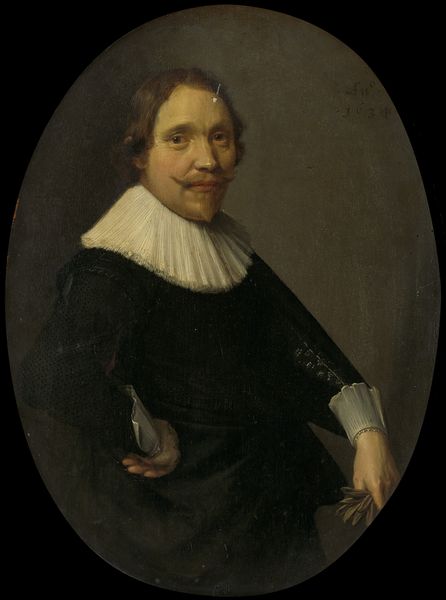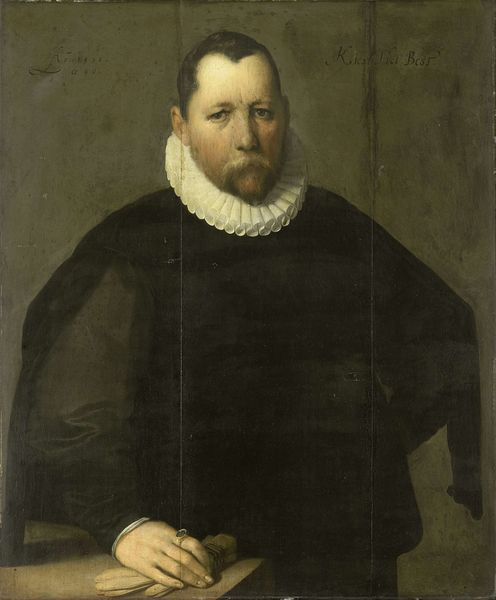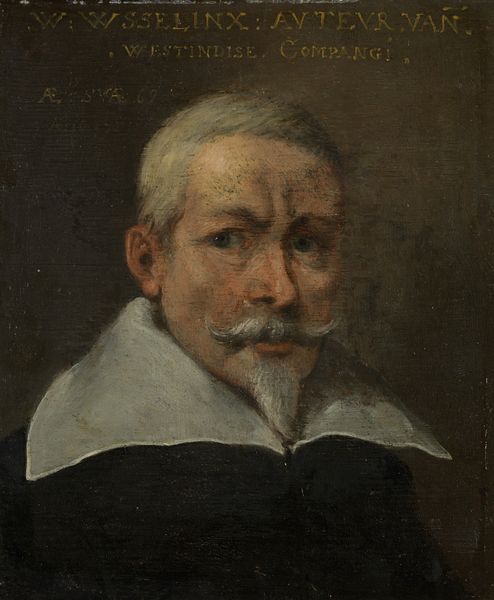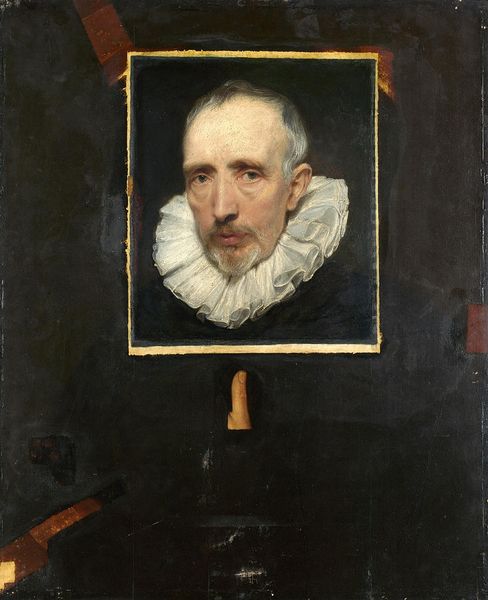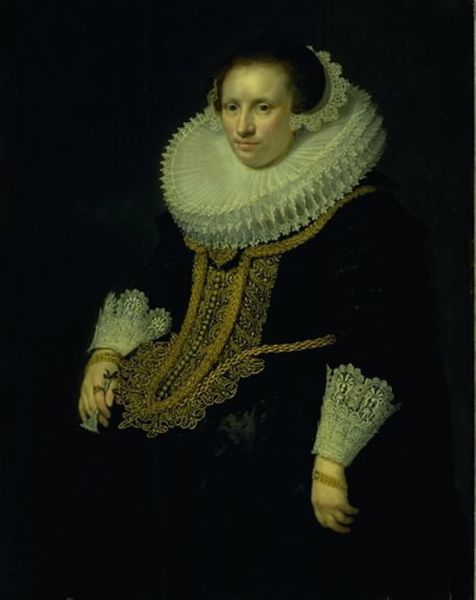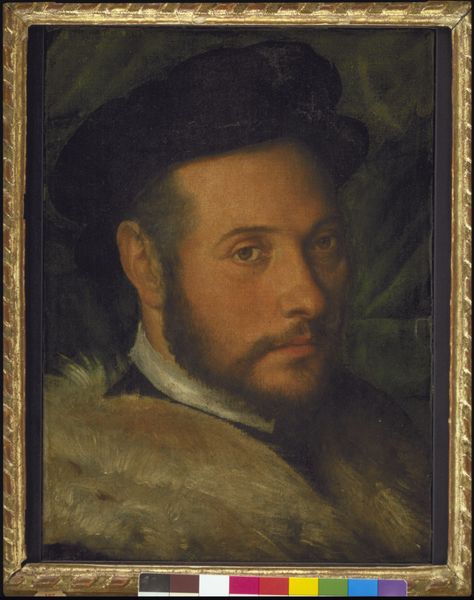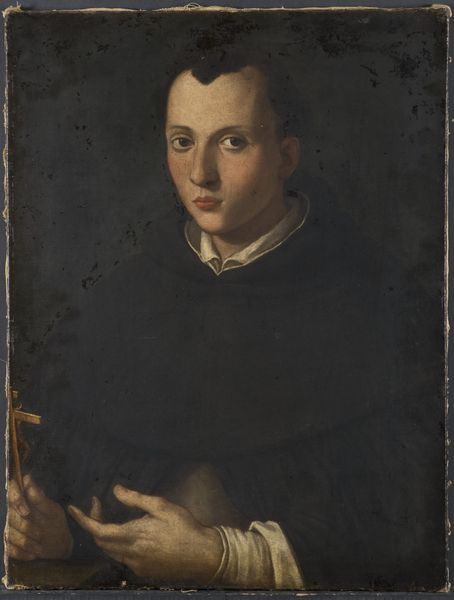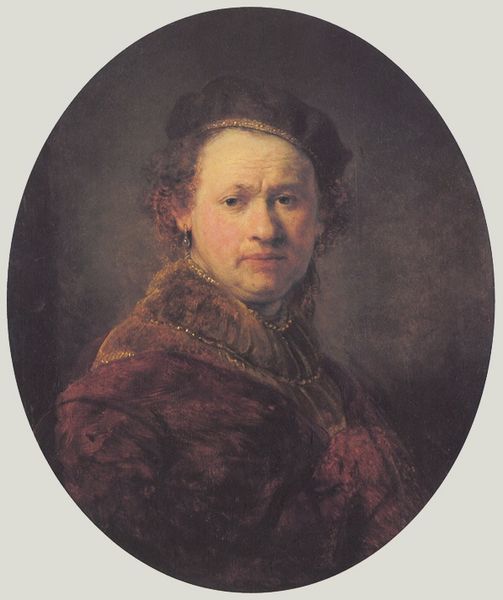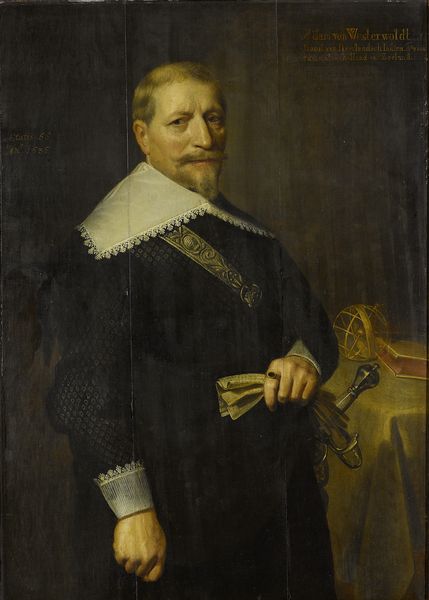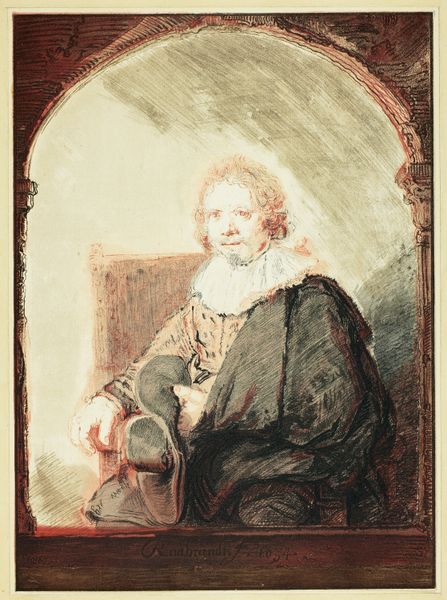
oil-paint, impasto, oil-on-canvas
#
portrait
#
16_19th-century
#
oil-paint
#
figuration
#
oil painting
#
impasto
#
genre-painting
#
academic-art
#
oil-on-canvas
#
realism
Dimensions: 21 3/4 x 18 in. (55.25 x 45.72 cm) (canvas)
Copyright: Public Domain
Editor: This is "The Patrician," painted in 1875 by William Merritt Chase, using oil on canvas. The impasto texture of the paint is so striking. I'm really drawn to the way he captured the gentleman’s gaze, but I'm curious about the overall artistic choices. What do you see when you look at this piece? Curator: Immediately, I'm struck by the manipulation of light and shadow. Observe how Chase uses chiaroscuro to sculpt the face, directing our gaze. Note the subtle transitions from light to dark across the brow, nose, and cheekbones, giving form to the figure and emphasizing the sitter's presence. How does the application of impasto, the thick layering of paint, further enhance this effect in your opinion? Editor: Well, the texture really makes the ruff collar pop, creating a tactile feel. And it makes the figure more dynamic somehow, less static. Curator: Precisely! It energizes the surface. Also consider the composition: the cropped view, the sitter's direct gaze. Chase deliberately employs these devices to create a sense of intimacy and immediacy. Are you familiar with the compositional effects such portraits are designed to elicit? Editor: I see how it pulls me in. It's less about idealizing the sitter and more about capturing a real person. There’s even a looseness in the brushstrokes. It feels quite modern, almost unfinished in some parts. Curator: Indeed. While adhering to academic traditions, Chase was also experimenting with a looser, more painterly style. His treatment of light and impasto challenges traditional notions of finish, suggesting a new approach to portraiture. Look again at how he lets some areas recede into the darkness while other sections explode with light and texture. How would you say these choices reflect his artistic aims? Editor: I think I'm starting to see it as a really compelling blend of academic technique with a modern sensibility. Thanks! Curator: A fruitful observation! Analyzing these intrinsic formal qualities allows for deeper appreciation.
Comments
No comments
Be the first to comment and join the conversation on the ultimate creative platform.
